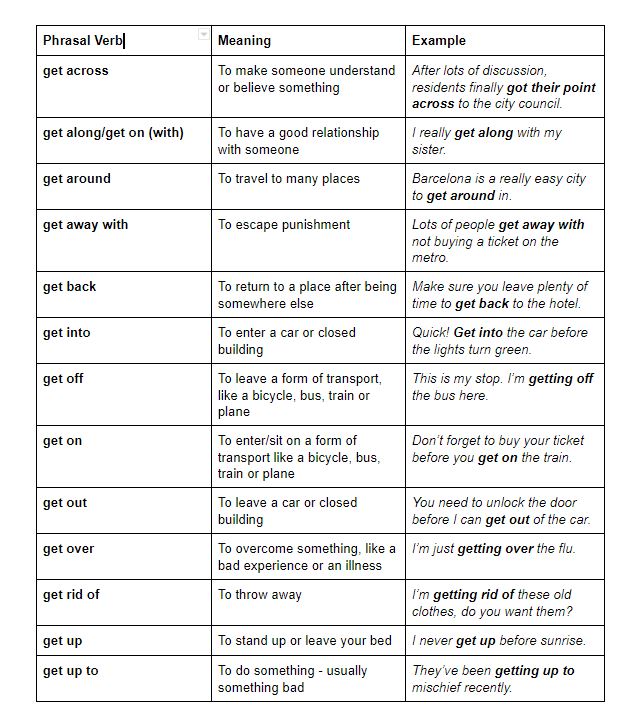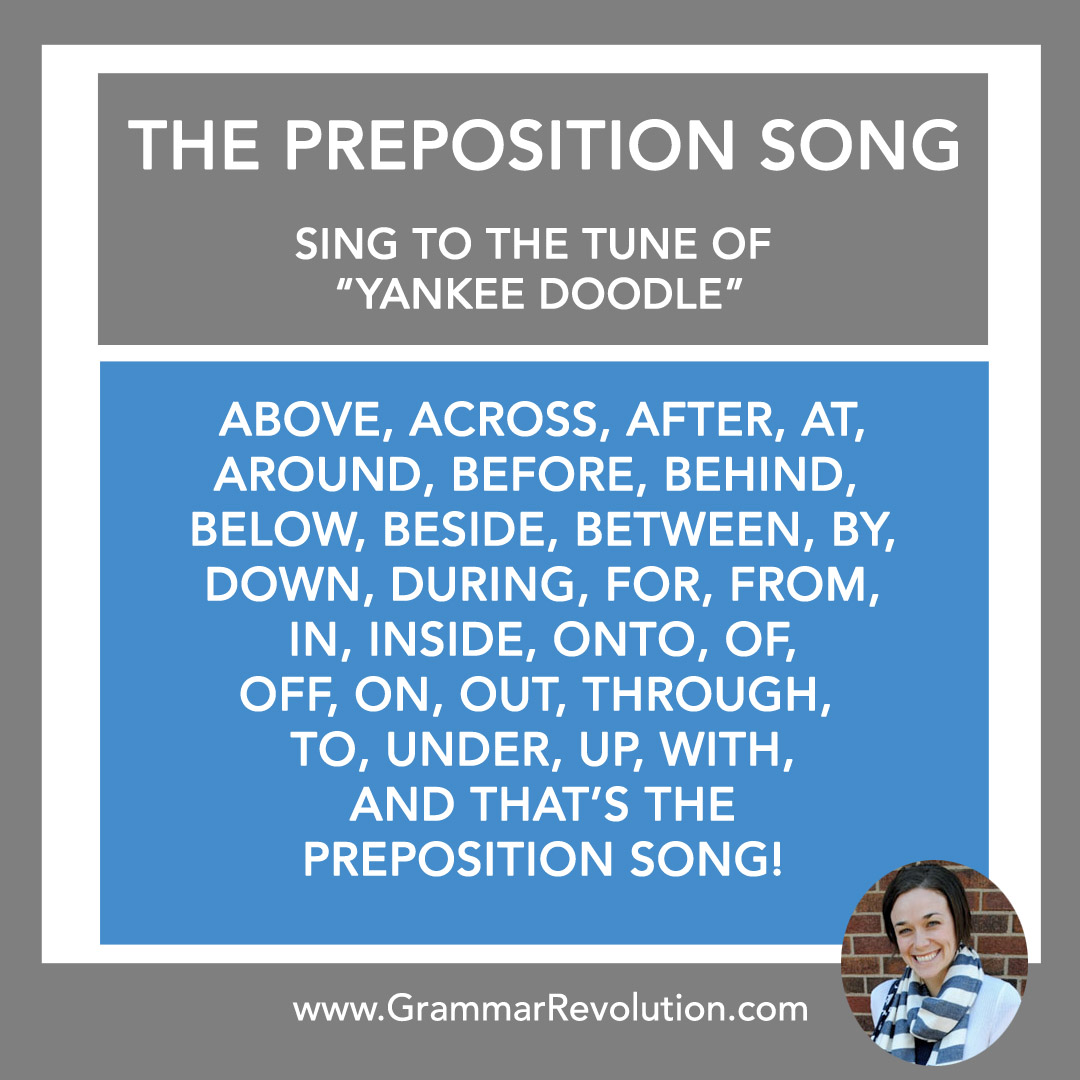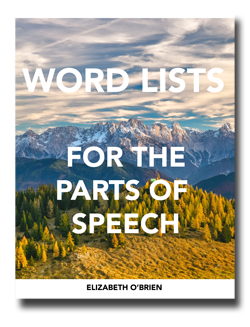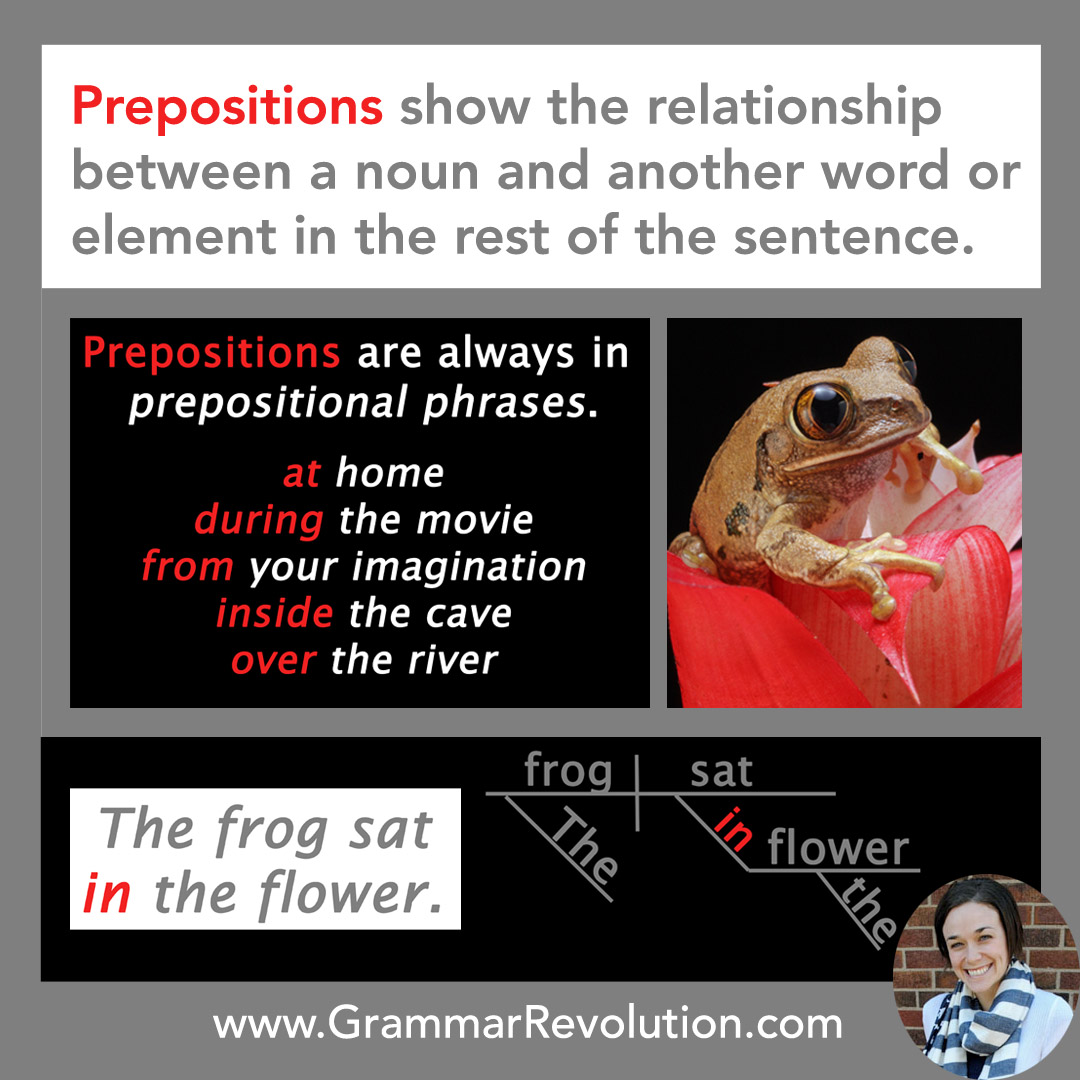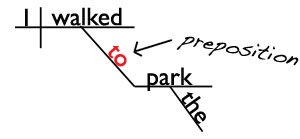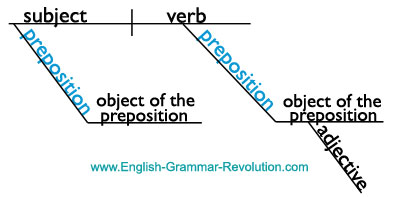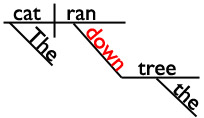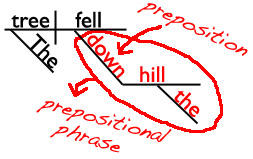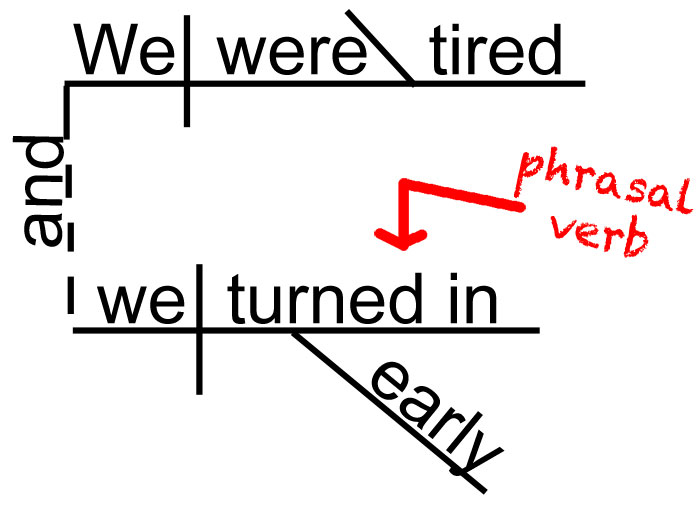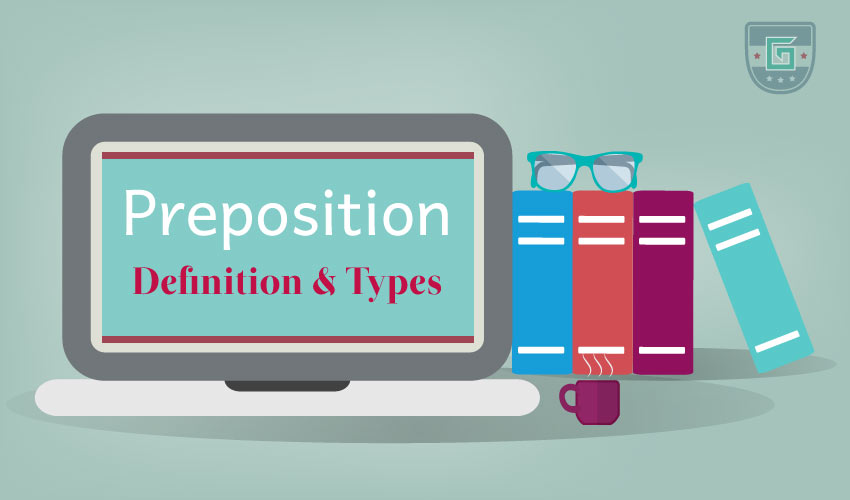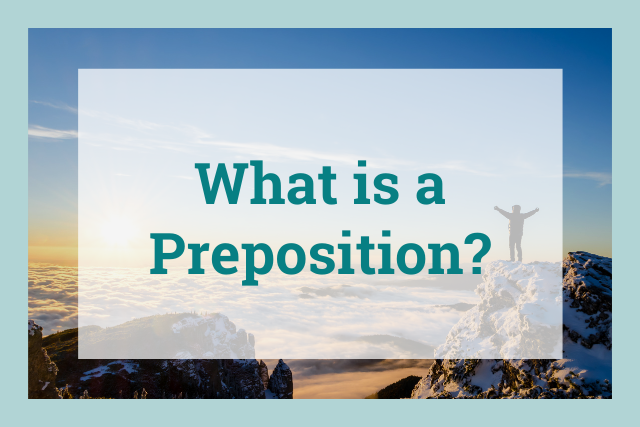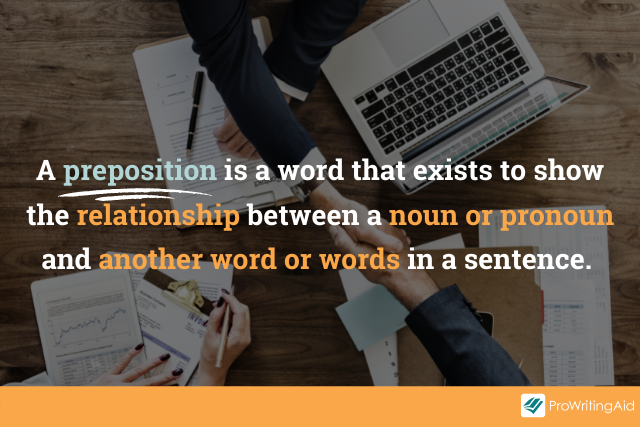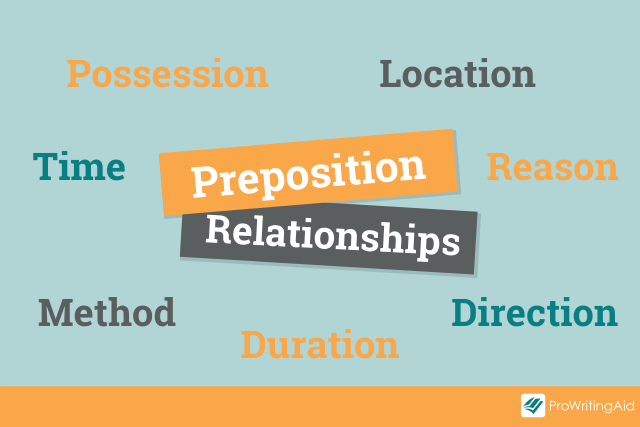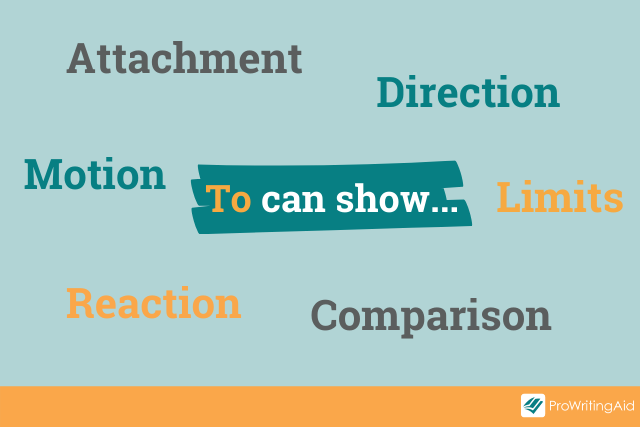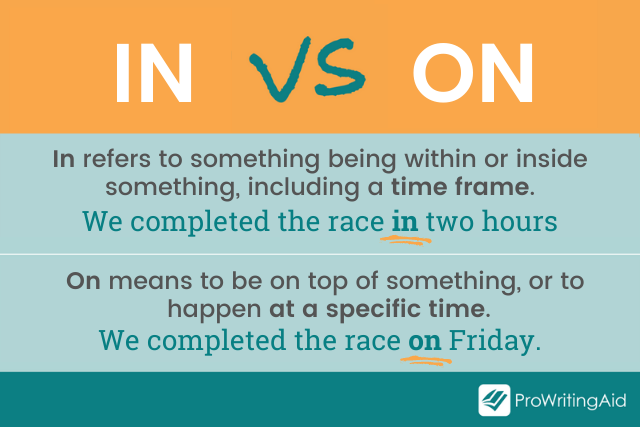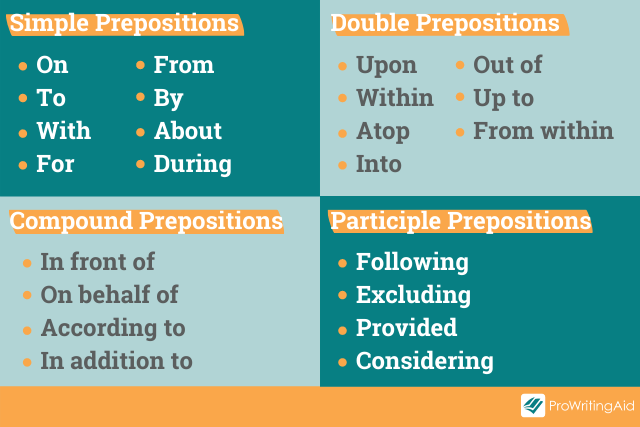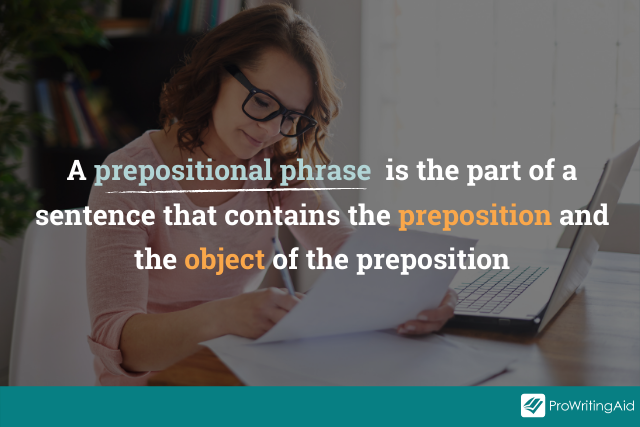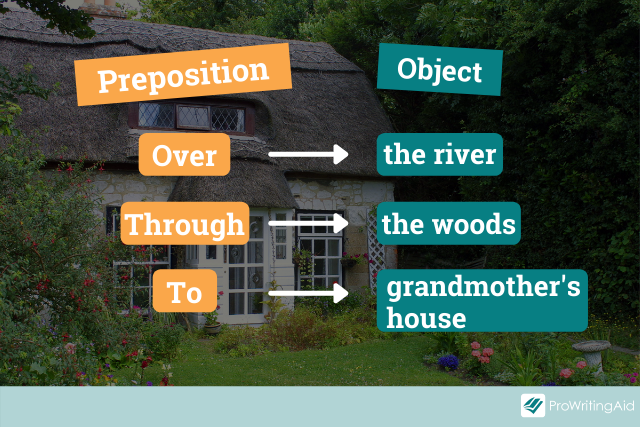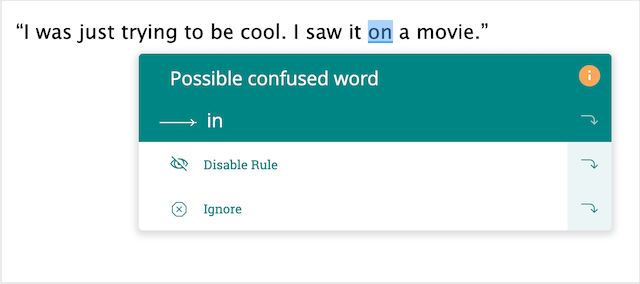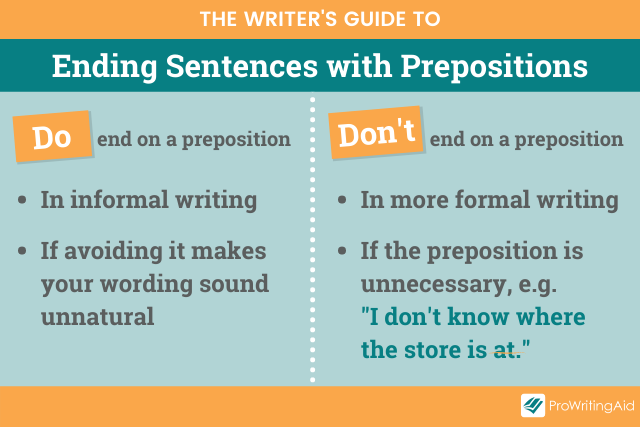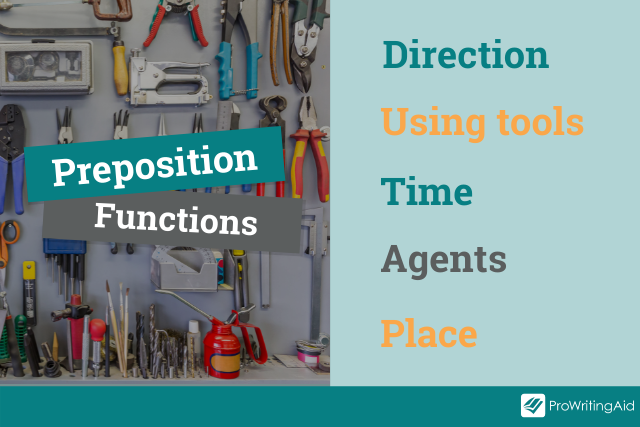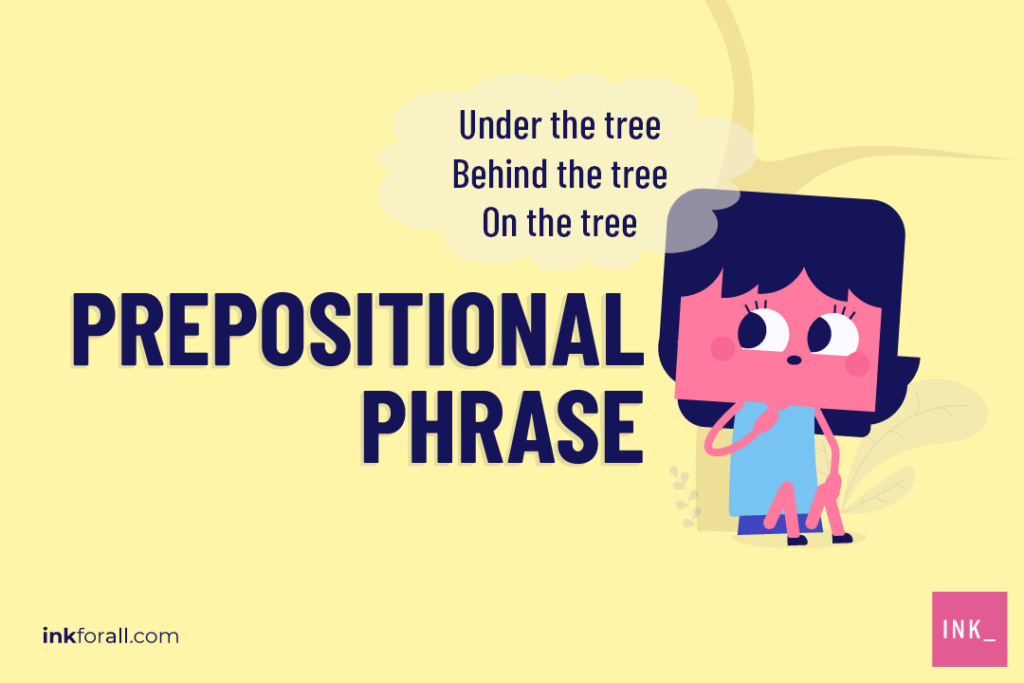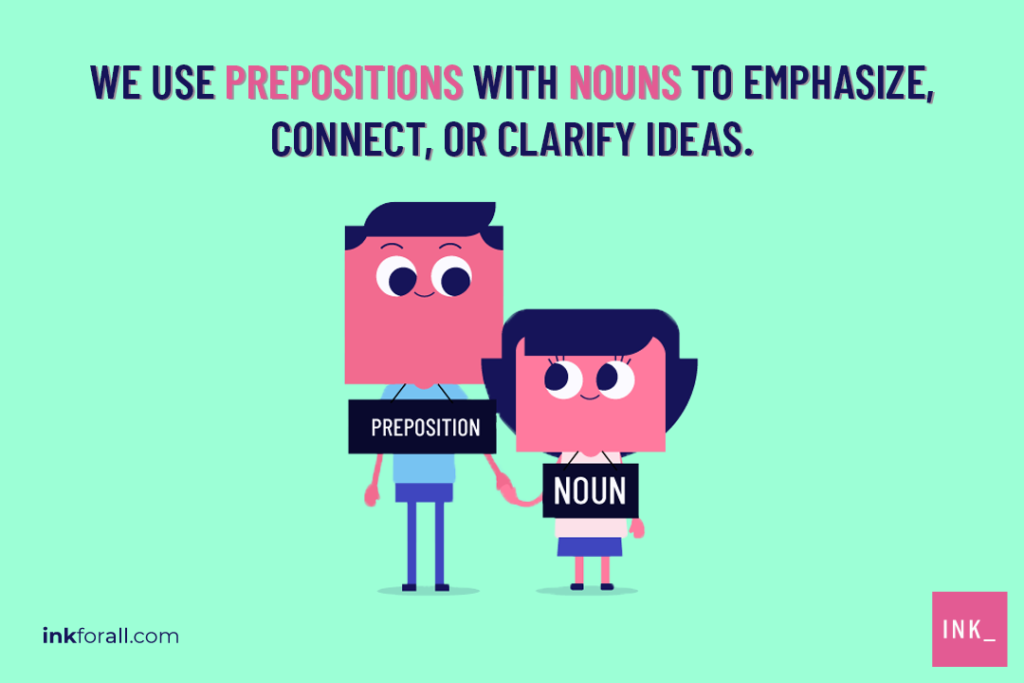The word ‘get’ is one of the most common and versatile verbs in English. It can be used in lots of different ways, and is usually seen in informal writing or speaking. You can use the word ‘get’ on its own, with a preposition to make a phrasal verb, or with a participle in the passive voice.
Now we’re going to look at some of these uses in more detail. So, let’s get started!
1. Get = to obtain, to receive, to buy
The word ‘get’ can be used as a verb to express the actions of obtaining, receiving or buying. To form a sentence, we use get + direct object or get + indirect object + object.
Let’s take a look at some examples. Don’t forget ‘get’ is an irregular verb, so when we use the past simple we change (or conjugate) to ‘got’
To obtain
- She got the telephone number from her boss.
- I got the grade to pass the course.
- Unfortunately, Henry didn’t get the job.
To receive
- Did you get my letter?
- He got a fine for driving too quickly.
- I got a delivery this morning.
To buy
- Can you get some milk from the shop?
- I didn’t get you a newspaper. I’m sorry.
- He’s just been shopping and got a new face cream.
2. Get = to reach, to arrive
We can use ‘get’ when talking about arriving or reaching a place, to express movement or travel. To form a sentence, we use get + place expression. After the word ‘get’, we also normally use the preposition ‘to’.
To reach
- How long did it take you to get to the top of the mountain?
- If you keep walking you’ll suddenly get to a bridge.
To arrive
- I usually get home at 7pm.
- What time do you get to school?
3. Get = to become
‘Get’ is also used to express a change of state or situation. To form a sentence, we use get + adjective.
To become
- Don’t get angry!
- Wear a jacket or you’ll get cold.
- The weather gets warmer starting in April.
- In the UK it gets dark at 5pm.
- After going for a run, I get really hungry.
4. Get as a phrasal verb
‘Get’ can be used in phrasal verbs, which have various meanings. To form a sentence, use get + preposition/adverb. Here are a handful of common examples:
5. Get in the passive
We can also use the word ‘get’ in the passive form. Here it is used in place of the verb ‘to be’ to sound more informal. So, instead of using the standard passive be + participle, we can also use get + participle. For example:
- My bike was stolen (standard passive)
- My bike got stolen (get passive)
We use the passive form when we want to emphasize the nature of the event, or the people involved instead of who does the action. For example:
- Mike just got promoted. (Emphasis on Mike rather than his boss)
- The burglar got arrested. (Emphasis on the burglar rather than the police)
‘Get’ is also very commonly used to describe negative events. For example:
- Our house got badly damaged in the storm.
- We got delayed coming back from London.
6. Get something done
Our final use of the word get is a more informal way of saying ‘to have something done’ for us or to us. This is normally when we pay for some kind of service – such as at the hairdresser, mechanic or dentist. To form a sentence, we use the structure get + object + past participle.
To get something done
- I’m getting my hair cut on Wednesday.
- I got my teeth checked at the dentist this morning.
- I need to get my laptop repaired.
- I’ll get your coat cleaned if you like.
- He gets his car washed every Saturday.
Enjoy this post? Check out our blog post: 10 phrasal verbs to help you become an English expert.
Glossary for Language Learners
Find the following words in the article and then write down any new ones you didn’t know.
Versatile (adj): able to be used for lots of different purposes.
Get started (exp): to begin.
Hairdresser (n): the place where you go for a haircut.
Key
adj = adjective
exp = adverb
n = noun
Study English at Oxford House Barcelona
Interested in taking an English course at Oxford House Barcelona? Check all the different English classes we can offer you now or in the summer, or contact us for more information.
Study English at Oxford House Barcelona
Interested in taking an English course at Oxford House Barcelona? Check all the different English classes we can offer you now or in the summer, or contact us for more information.
In this post, we are covering preposition, its types with examples and rules. Following points will be covered.
- What is a preposition?
- List of Prepositions
- Types of Preposition
- Simple Preposition
- Double preposition
- Compound preposition
- Participle preposition
- Phrase preposition
- Types of Prepositions According to Function
- Preposition of time
- Preposition of place
- Preposition of manner
- Preposition of cause and effect
- Preposition of instruments/devices
- Preposition of direction/movement
- Preposition of agent
- Rules of Preposition
A preposition is an important part of the English language and grammar. Prepositions are common but they seem complicated when we use them. These are the words used to link the noun and pronoun or other words.
Preposition is used to prove a correlation between nouns and pronouns in a sentence.
Examples
- She is going to school.
- He put the flowers by the door.
- The jug was placed on the table.
In above sentences the bold words are prepositions.
Preposition + Noun
I gave the jug to Alan.
Preposition + Pronoun
I gave the wallet to him.
Preposition + Gerund
I devoted my time to stitching.
2 – List of Prepositions
- Above
- About
- Absent
- Across
- After
- Along
- Among
- Around
- As
- Before
- Behind
- Below
- Beside
- Beneath
- Between
- Beyond
- By
- Considering
- Despite
- During
- Except
- For
- From
- Given
- In
- Inside
- Into
- Minus
- Of
- Off
- On
- Onto
- Opposite
- Outside
- Over
- Per
- Plus
- Round
- Since
- Than
- Through
- To
- Towards
- Under
- Until
- Up
- Upon
- Via
- Without
- Within
3 – Types of Preposition
There are different types of prepositions
- Simple preposition
- Double preposition
- Compound preposition
- Participle preposition
- Phrase preposition
3.1 – Simple Preposition
It usually contains only two syllables.
Simple prepositions are; by, at, in, of, off, out, till, up, to, with, on, etc.
Simple Preposition Examples
- Cat sat on the bed.
- There is some water in the jug.
- He is working hard to pass the exam.
- My baby is suffering from flu.
- I am from Islamabad.
- She is working at grocery store.
- This book belongs to Tom.
3.2 – Double preposition
When two simple prepositions are combined, they are called double prepositions. They habitually indicate directions.
Double prepositions are
- into
- upon
- along
- onto
- out of
- behind
- without
- within
- next to
Double preposition examples
- Once upon a time, there was a lion.
- The cat climbed onto the table.
- The dog is sitting behind the chair.
- Hira never goes out without her mobile.
- The ducks are eating along the river.
- The bank is next to the post office.
3.3 – Compound preposition
Compound prepositions composed of two or more words. They are easy to known because the last word of a compound preposition is always simple preposition.
Compound preposition = Prefix + Noun / adjective / adverb
Compound prepositions are
- In behalf of
- According to
- Beyond
- In front of
- Beneath
- Besides
- Between
- Without
- Around
Compound preposition examples
- The children ran around the table.
- His personality is beyond imagination.
- There is a station beneath this area.
- There is a show inside the box.
- The dog is jumping around the seat.
- The auto pulled along the drive way.
- She is picked in front of bank.
3.4 – Participle preposition
There are the verbs that act as a preposition. Frequently, such words end in –ing and –ed.
Participle prepositions are
- During
- Considering
- Barring
- Provided
- Laughing
- Concerning
- Frustrated
Participle prepositions examples
- The teacher, sometimes gets frustrated with her class.
- Everyone, please keep quiet during the class.
- The kept following her home.
- Considering his education, he did a great job.
- Sara is interested in anything concerning novels.
- All the brothers were there including the mother.
3.5 – Phrase preposition
Group of words used with a single preposition is called phrase preposition.
For example,
- On the behalf
- On time
- At home
- Before class
- By virtue of
- Inspite of
- In place of
- On the floor
Sometimes they are used as an adverb and sometimes as a preposition.
- A word is preposition when it adds noun or pronoun. For example, The knife lies in the basket.
- A word is an adverb when it adds verb. For example, Let’s move on.
Phrase preposition = Preposition + object + modifier
- Jon received the trophy on the behalf of his friend.
- The match got canceled because of heavy rain.
- I will get to the class on time.
- Teacher met to discuss lecture before class.
- In course of time, the wounds healed.
4 – Types of Prepositions According to Function
There are many types of prepositions according to function.
- Preposition of time
- Preposition of place
- Preposition of manner
- Preposition of cause and effect
- Preposition of instruments / devices
- Preposition of direction / movement
- Preposition of agent
4.1 – Preposition of time
These types of prepositions show time in a sentence. It discusses the specific time period like dates, days of the week etc.
Preposition of time
- At: Used for precise time.
- In: Used for months, years, centuries and long periods.
- On: Used for days and dates.
Table
| AT | IN | ON |
| At 9 o’clock | In June | On Monday |
| At night | In the spring | On 8 February |
| At breakfast | In 1991 | On Sunday |
| At dinner | In December | On a summer eve |
| At noon | In the age | On independence day |
| At school | In the past | On my birthday |
| At college | In the future | On new year’s eve |
| At university | In the summer | On the way |
| At home | In a row | On a ship |
| At sunrise | In the garden | On a radio |
| At the moment | In the sky | On 30th June 2010 |
| At the cinema | In winter | On the wall |
Uses of at
- We have a meeting at 9 a.m.
- I went home at lunch time.
- We have a party at midnight.
- The shop closes at 6 o’ clock
- The stars shine at night.
At is used to express
- Exact time at 5 o’ clock
- Meal time at lunch
- Festivals at New Year
- With age at the age of 20
- Time at this time
Uses of in
- I shall return in an hour.
- In this town, it often rain in July.
- Would you think we will go to Greece in the future?
- I shall be successful in the next year.
- We will go to hill station in the summer.
In is used to express
- Parts of the day in the morning
- Months in December
- Centuries in 20th Century
- Years in 2013
- Season in Autumn
- Time period in those days
Uses of on
- I work on Monday.
- His birthday on 1st April.
- Vacations end on Tuesday.
- We are going to Texas on 1st June.
- We will meet on Friend’s Day
On is used to express
- Festivals on independence day
- Dates on 1st May
- Days of the week on Monday
- Occasion on that day
- Anniversaries on wedding day
4.2 – Preposition of Place
These types of prepositions show a place in a sentence.
- At: It is used to discuss a certain point.
- In: It is used an enclosed space.
- On: It is used to discuss a surface.
Examples of Preposition of Place
Uses of In
- I live in Multan
- She is in the bus.
- He is the most famous artist in the world.
- She watches TV in the room.
- Google is the best search engine in the world.
Uses of At
- I met him at the bust stop.
- We are going to watch the movie and we met him at cinema.
- Sun rises at 05:30 a.m.
- There is a rod at the roof.
Uses of On
- Look at the lizard on the wall.
- There is a book on the table.
- There is a smile on her face.
- My room is on the first floor of the hotel.
- There is a beautiful picture of my father on the wall.
4.3 – Preposition of Manners
Preposition of manners are about the method something happens or how something is complete. Commonly used words are “by” and “with”. Some other words are also used (in, like, on).
Examples
- She will dies by the cancer.
- Teacher faces students with big courage.
- My baby sings like a cuckoo bird.
- We are going by taxi.
- The tourist arrived on the island on a bus.
4.4 – Prepositions of cause and effect
They are used to show the cause of something or a reason of something done.
Commonly used words are; due to, because of, from hence, on account, therefore through etc.
Examples
- He cannot run the bicycle because of his leg.
- He is sick from fever.
- Her sales increased repeatedly through good marketing.
- The quarrel was increased due to discourtesy of both sides.
- She does not eat meal regularly on account of her disease.
4.5 – Preposition of Devices / Instrument
This type of preposition is used to express different technologies, machines or devices. Some words are used for, by, with and on.
On, with = describe the use of machines and devices.
For examples,
- My aunt is back home by taxi.
- Bob opened the lock with an old key.
- May I do my work on your computer?
- We are going on a trip by ferry.
- My work is done with the use of your cell phone.
4.6 – Preposition of Direction / Movement
This type of preposition tell us a direction or location of something.
Some words used are
- Across
- Along
- Among
- At
- Behind
- Below
- Into
- Towards
- Onto etc.
Examples
- Supervisor walked towards the examination hall.
- Sana was sitting among her family.
- Meet me at the bus stop.
- The ducks are eating along the river.
- I have the poster below the mirror.
4.7 – Preposition of agent
These types of prepositions are used to show a causal connection between noun and usually a verb. Words used as preposition of agent are:
- By
- With
Examples
- A literature book was written by John Keats.
- This work was done by me.
- Some institutes were closed by government.
- Hira graduated with a public administration degree.
Some commonly used prepositions are:
In front of
It is used to show that someone is standing in front of other person. For example,
The teacher stands in front of the class.
Behind
It is used to show that at the back of something.
Example
There is a shoe behind the table.
Between
It is used to show that two things or boejcts
Example
There is a strong relationship between Tom and Alice.
Across from
It is used to show an opposite direction.
Example
She lives across from school.
Next to
It is used to show that a person that is at the side of another thing.
Example
A guard stands next to the entrance gate.
Under
It is used to show low level of something.
Example
There are boxes under the bed.
5 – Rules of prepositions
There are three rules
- Pair them accurately.
- Watch what follows them.
- Avoid using them at the end of sentences
5.1 – Pair them properly
Determining which preposition to exercise be a capable of tricky prepositions. It is notably difficult when dealing with idioms. Idiomatic expressions are expressions you just give birth to memorize, and at what time errors are made.
That’s why you need to write them accurately with their places and easy to understand.
5.2 – Watch what follows them
Prepositions are always be followed by a noun / pronouns. The noun is called the object of preposition. Note that a verb can’t be the object of a preposition.
Example
The bone was for the dog. (correct)
The bone was for walked. (incorrect)
5.3 – Avoid using them at the end of sentences
Because prepositions must be followed by a noun and have an object, they should rarely be sited at the end of sentences.
Example
The table is where I put my books on. (incorrect)
I put my books on the table. (correct)
Further Reading:
- 50 sentences of prepositions
- Preposition Usage and Examples
- Learn Prepositions

What is a preposition?
A preposition is a word used to link nouns, pronouns, or phrases to other words within a sentence. They act to connect the people, objects, time and locations of a sentence. Prepositions are usually short words, and they are normally placed directly in front of nouns. In some cases, you’ll find prepositions in front of gerund verbs.
A nice way to think about prepositions is as the words that help glue a sentence together. They do this by expressing position and movement, possession, time and how an action is completed.
Indeed, several of the most frequently used words in all of English, such as of, to, for, with, on and at, are prepositions. Explaining prepositions can seem complicated, but they are a common part of language and most of us use them naturally without even thinking about it.
In fact, it’s interesting to note that prepositions are regarded as a ‘closed class’ of words in the English language. This means, unlike verbs and nouns, no new words are added to this group over time. In a way, it reflects their role as the functional workhorse of the sentence. They are unassuming and subtle, yet vitally important to the meaning of language.
There are two very important rules to remember when using prepositions. Because they are somewhat vague, learning about prepositions and using them correctly in sentences takes practice. Because 1:1 translation is often impossible when dealing with prepositions, even the most advanced English students have some difficulty at first.
- The first rule is that to make sentences clear, specific prepositions are needed. For example, the preposition in means one thing and the preposition on cannot substitute for it in all cases. Some prepositions are interchangeable but not always. The correct preposition means one particular thing and using a different proposition will give the sentence a very different meaning. I want to see you in the house now, Bill! means something very different from I want to see you on the house now, Bill! In the house means Bill should go through the door, walk inside, and stand in the hall or living room. On the house means Bill would need to get a ladder and climb to the roof where he would be on top of the house.
- The second rule for using prepositions is that prepositions are generally followed by nouns or pronouns. There was a time in the past when teachers held strictly to this rule, but it made for some clunky sentences. I am seeking someone I can depend on ends with the preposition on, so people who insisted that sentences shouldn’t end with a preposition would be forced to use convoluted and unnatural phrasing. To avoid ending that sentence above with a preposition, you’d have to say, someone I can depend on is whom I am seeking.
- There are more than 100 prepositions in the English language. In addition, there are endless possibilities for creating prepositional phrases, phrases that begin with a preposition and end with a noun or pronoun. In the following sections, you will find examples of prepositions, types of prepositions, a comprehensive list of prepositions, and some helpful preposition exercises. As you read the examples and study the list, remember that prepositions usually convey concepts such as comparison, direction, place, purpose, source possession, and time.
In the following sentences, examples of prepositions have been italicized. As you read, consider how using different prepositions or even different types of prepositions in place of the examples might change the relationship between the rest of the words in the sentence.
- I prefer to read in the library.
- He climbed up the ladder to get onto the roof.
- Please sign your name on the dotted line after you read the contract.
- Go down the stairs and through the door.
- He swam across the pool.
- Take your brother with you.
Types of Prepositions
There are three types of prepositions, including time prepositions, place prepositions, and direction prepositions.
Time prepositions are those such as before, after, during, and until; place prepositions are those indicating position, such as around, between, and against; and direction prepositions are those indicative of direction, such as across, up, and down. Each type of preposition is important.
Type of Prepositions
Prepositions of Time
Basic examples of time prepositions include: at, on, in, before and after. They are used to help indicate when something happened, happens or will happen. It can get a little confusing though, as many different prepositions can be used.
Prepositions of time examples in the following sentences are in bold for easy identification.
For example:
- I was born on July 4th, 1982.
- I was born in 1982.
- I was born at exactly 2am.
- I was born two minutes before my twin brother.
- I was born after the Great War ended.
The above makes it seem quite difficult, with five different prepositions used to indicate when something happened. However, there is a set of guidelines that can help decide which preposition to use:
For years, months, seasons, centuries and times of day, use the preposition in:
- I first met John in 1987.
- It’s always cold in January
- Easter falls in spring each year.
- The Second World War occurred in the 20th century.
- We eat breakfast in the morning.
For days, dates and specific holiday days, use the preposition on.
- We go to school on Mondays, but not on Sunday
- Christmas is on December 25th.
- Buy me a present on my birthday.
For times, indicators of exception and festivals, use the preposition at:
- Families often argue at Christmas time.
- I work faster at night.
- Her shift finished at 7pm.
Before and after should be much easier to understand than the other examples of prepositions of time. Both are used to explain when something happened, happens or will happen, but specifically in relation to another thing.
- Before I discovered this bar, I used to go straight home after work.
- We will not leave before 3pm.
- David comes before Bryan in the line, but after Louise.
Other prepositions of time could include: During, about, around, until and throughout.
- The concert will be staged throughout the month of May.
- I learned how to ski during the holidays.
- He usually arrives around 3pm.
- It was about six in the morning when we made it to bed.
- The store is open until midnight.
Prepositions of Place
To confuse matters a bit, the most common prepositions to indicate time – on, at, in – are also the most common prepositions to indicate position. However, the rules are a little clearer as place prepositions are a more rigid concept than time prepositions.
Prepositions of place examples in the following sentences are in bold for easy identification.
- The cat is on the table.
- The dogs are in the kennel.
- We can meet at the crossroads.
The guidelines can be broken down as follows:
On is used when referring to something with a surface:
- The sculpture hangs on the wall.
- The images are on the page.
- The specials are on the menu, which is on the table.
In is used when referring to something that is inside or within confined boundaries. This could be anything, even a country:
- Jim is in France, visiting his aunt in the hospital.
- The whiskey is in the jar in the fridge.
- The girls play in the garden.
At is used when referring to something at a specific point:
- The boys are at the entrance at the movie theater.
- He stood at the bus stop at the corner of Water and High streets.
- We will meet at the airport.
Lot’s of other prepositions of place, such as under, over, inside, outside, above and below are used in English. There is, however, a lot less confusion as they refer to rigid positions rather than abstract ones.
- The cat is under the table.
- Put the sandwich over there.
- The key is locked inside the car.
- They stepped outside the house.
- Major is ranked above corporal.
- He is waving at you from below the stairs.
Prepositions of Movement
Prepositions of movement are quite easy to understand as they are less abstract than prepositions of place and time. Essentially, they describe how something or someone moves from one place to another. The most commonly used preposition of movement is to, which usually serves to highlight that there is movement towards a specific destination.
Prepositions of movement examples in the following sentences are in bold for easy identification.
- He has gone on vacation to France.
- She went to the bowling alley every Friday last summer.
- I will go to bed when I am tired.
- They will go to the zoo if they finish their errands.
Other more specific prepositions of movement include: through, across, off, down and into. These prepositions can sometimes get mixed up with others. While they are similar, they have individual meanings that add context to the movement.
Across refers to moving from one side to another.
- Mike travelled across America on his motorcycle.
- Rebecca and Judi are swimming across the lake.
Through refers to moving directly inside something and out the other end.
- The bullet Ben shot went through the window.
- The train passes through the tunnel.
Into refers to entering or looking inside something.
- James went into the room.
- They stare into the darkness.
Up, over, down, past and around indicate directions of movement:
- Jack went up the hill.
- Jill came tumbling down after.
- We will travel over rough terrain on our way to Grandma’s house.
- The horse runs around the track all morning.
- A car zoomed past a truck on the highway
How to Recognize a Preposition?
Recognizing prepositions can be challenging as they do not always follow a consistent pattern in terms of their position in a sentence, nor do they have a discernible structure or spelling. We do know, however, that prepositions are almost always short words, with the majority having less than six letters. One technique people use to identify a preposition is to think of a preposition as anywhere a mouse can go. Above, below, next to, between, beyond, through, by, with…It won’t cover them all, but it can be a useful question to ask when trying to identify and recognize a preposition. While there are over 100 prepositions, there are around 500,00-700,000 nouns in English! It is unlikely anyone will learn so many nouns, but recognizing and then mastering prepositions might be a worthwhile and attainable goal.
Prepositions with Nouns
There are lots of different nouns that carry specific prepositions to consolidate their meaning. These are called dependent prepositions. Again, there isn’t a set rule that says a particular type of noun will take a dependent preposition, although they normally follow the noun. Moreover, there are many possible combinations. Essentially, it’s case of familiarizing yourself with the different possibilities of nouns and dependent prepositions. Examples:
- He displayed cruelty towards his dog.
- She had knowledge of physics.
- The trouble with Jack.
- 21 is the age at which you are allowed to drink.
- Bolt made another attempt at the world record.
- The police held an inquiry into the murder.
Prepositions with Verbs
Prepositional verbs – the phrasal combinations of verbs and prepositions – are important parts of speech. The prepositions again act as links between the verb and noun or gerund, giving extra meaning to the sentence. The prepositions most commonly used with verbs are: to, for, about, of, in, at and from. The good news is that these will always come after the verb in the sentence. However, it should also be noted that the prepositional verbs can have slightly different meaning compared to the original verb. For example, to relate a story simply means to tell a story, to relate to a story means you identify with it, find some personally meaning in that story.
Verb + to:
- He admitted to the charge.
- I go to Vancouver on vacation twice a year.
- William can relate to the character in the play.
Verb + for:
- He must apologize for his actions.
- We searched for ages before we found the perfect apartment.
- I provide for my family by working two jobs.
Verb + with:
- I don’t agree with your claim.
- The lawyer said he will meet with your representatives.
- They began with a quick warm-up.
Verb + of:
- I dream of a better life.
- Have you heard of Shakespeare?
- The bread consists of dough, raisins and a little honey.
Verb + in:
- Does Rick believe in miracles?
- Fallon lives in New York.
- The bus accident resulted in my being late to work.
Verb + at
- We arrived at our destination.
- Ilene excels at singing.
- Will the baby smile at her mother?
Verb + on:
- We should really concentrate on our studies now.
- Helen insisted on Brenda’s company.
- Morris experimented on some canvas.
Verb + from:
- Since turning 80, she suffers from lapses in concentration.
- Dad retired from the navy in the 1970s.
- Billy Bob, please refrain from doing that.
Prepositions with Adjectives
Prepositions can form phrases with adjectives to give further context to the action, emotion or thing the adjective is describing. Like verbs and nouns, adjectives can be followed by: to, about, In, for, with, at and by.
- I am happily married to David.
- Ellie is crazy about this movie.
- Michelle is interested in politics.
- We are sorry for your loss.
- Jane will be delighted with her results.
- Is he still angry at the world?
- The entire room was astonished by the election results.
There can sometimes be a pattern in deciding which prepositions go with adjectives, for example, when adjectives have the same or very similar meaning to each other, they might take the same preposition:
- Frightened of, afraid of, scared of, terrified of
Indeed, when adjectives have opposite meaning they might also take the same preposition:
- Good at, great at, superb at, wonderful at
- Bad at, terrible at, woeful at, inept at
There are always many exceptions to the above, but it can help that there seems to be some
consistency when adjectives have the same meaning or opposite meaning.
Nevertheless, perhaps a more general rule is that English speakers simply need to learn which prepositions go with which adjectives, as meaning can change significantly by using a different preposition.
- I am good at sports means I have some athletic talent.
- The nurse was good to my mother means she took care of her and was nice, kind, and helpful.
- I am good with animals means I get along with them and handle them well.
- Swimming is good for your health.
- That was good of you to come means you were begin nice and good to visit.
- My little brother is good inside (his body) means even though you can’t see how he thinks and feels, he is good. Even if his behavior is bad.
- The blueberry jam will be good on toast.
Prepositions Exercises
The following exercises will help you gain greater understanding about how prepositions work. Choose the best answer to complete each sentence.
1. The bone was _______ the dog.
a. About
b. For
c. After
d. Considering
Answer: b. The bone was for the dog.
2. We are going on vacation _______ August.
a. On
b. At
c. In
d. Since
Answer: c. We are going on vacation in August.
3. Please put the vase ________ the table.
a. In
b. On
c. For
d. Over
Answer: b. Please put the vase on the table.
4. I received a present ________ Janet.
a. From
b. Of
c. By
d. About
Answer: a. I received a present from Janet.
5. School begins ________ Monday.
a. In
b. On
c. From
d. Since
Answer: b. School begins on Monday.
List of Prepositions
While there are only about 150 prepositions in the English language, these words are among the most important. Without them, the sentences we speak, read, and write would be difficult to understand. The following list of prepositions is not a complete one, however it is among the most comprehensive lists of prepositions available anywhere.
Aboard
About
Above
Absent
Across
After
Against
Along
Alongside
Amid
Among
Amongst
Anti
Around
As
At
Before
Behind
Below
Beneath
Beside
Besides
Between
Beyond
But
By
Circa
Concerning
Considering
Despite
Down
During
Except
Excepting
Excluding
Failing
Following
For
From
Given
In
Inside
Into
Like
Minus
Near
Of
Off
On
Onto
Opposite
Outside
Over
Past
Per
Plus
Regarding
Round
Save
Since
Than
Through
To
Toward
Towards
Under
Underneath
Unlike
Until
Up
Upon
Versus
Via
With
Within
Without
Worth
Preposition definition: A preposition is a part of speech that shows the relation of a noun or pronoun to another word.
What are prepositions? Prepositions show the relationship of a noun or pronoun to another word. These relationships include where, when, who, or what.
Examples of Prepositions:
- above (where?)
- before (when?)
- for (whom?)
- with (what?)
Let’s look closer at a preposition example.
A preposition can be understood as anywhere a dog can be in relation to its doghouse.
A dog can be:
- in the doghouse
- around the doghouse
- near the doghouse
- on the doghouse
Each of these prepositions describe the relation between the dog and its doghouse. The dog can be inside the doghouse, it can be around the doghouse, it can be near the doghouse, it can be on the doghouse, etc.
All of these preposition examples show where the dog is in relation to its doghouse.
What is the Role of a Preposition?

Most often prepositions are used to introduce prepositional phrases.
Prepositions serve to modify and generally function in prepositional phrases as adjectives or adverbs.
Examples of prepositions indicating where:
- along (the path)
- amid (torment)
- throughout (the garden)
- within (men)
Examples of prepositions indicating when:
- since (the storm)
- after (the party)
- before (noon)
- until (tomorrow)
Examples of prepositions indicating who:
- besides (Petra)
- except (the children)
- with (everyone)
- for (the teacher)
Examples of prepositions indicating what:
- besides (the essay)
- of (the few)
- like (the dog)
- with (chocolate)
Preposition List

aboard
about
above
across
after
against
along
amid
among
anti
around
as
at
before
behind
below
beneath
beside
besides
between
beyond
but
by
concerning
considering
despite
down
during
except
excepting
excluding
following
for
from
in
inside
into
like
minus
near
of
off
on
onto
opposite
outside
over
past
per
plus
regarding
round
save
since
than
through
to
toward
towards
under
underneath
unlike
until
up
upon
versus
via
with
within
without
For a more full list of prepositions, see our full page on the subject. Prepositions list here.
Object of Prepositions

Examples:
- along (the path)
- The path is the object of the preposition.
- amid (torment)
- Torment is the object of the preposition.
- throughout (the colorful garden)
- The colorful garden is the object of the preposition.
Some Prepositions Also Function as Subordinate Conjunctions

The prepositions that can function in subordinate conjunctions include: after, as, before, since, until.
Prepositions together within subordinate conjunctions function as adverbs.
Preposition Examples:
- Since the movie premiered, the star has received much attention.
- We could not make an appointment until the office opened the following day.
- The student did not think before he asked a question.
What are Prepositional Phrases?
What does prepositional phrase mean? Almost always a preposition will function in a prepositional phrase.
A prepositional phrase is any preposition and its object (a noun). A prepositional phrase may also include any modifiers in the phrase.
Prepositional phrases clarify the relationship of the preposition to other words.
Prepositional Phrase Examples:
- along the path
- along (prep.) + the (article) + path (noun) = prepositional phrase
- amid torment
- amid (prep.) + torment (noun) = prepositional phrase
- throughout (the colorful garden)
- throughout (prep.) + the (article) + colorful (adj.) + garden (noun) = prepositional phrase
Multiple prepositional phrases may exist within one larger prepositional phrase.
Prepositional Phrase Examples:
- within all of the men
- within all + of the men = prepositional phrase
- by the lake in the forest
- by the lake + in the forest = prepositional phrase
- on the table at the restaurant
- on the table + at the restaurant = prepositional phrase
Summary: What are Prepositions?
Define preposition: To clarify, prepositions:
- show the relationship of a word to a noun or pronoun
- are almost always used in prepositional phrases
- sometimes begin subordinate conjunctions
Contents
- 1 What is a Preposition?
- 2 What is the Role of a Preposition?
- 3 Preposition List
- 4 Object of Prepositions
- 5 Some Prepositions Also Function as Subordinate Conjunctions
- 6 What are Prepositional Phrases?
- 7 Summary: What are Prepositions?
This list of prepositions will help you understand what a preposition is. But let’s start by having you learn the preposition song. Singing this song is an easy way to help you memorize some of the prepositions. I’ll sing it for you in the video below. 
The Preposition Song
above, across, after, at, around, before, behind,
below, beside, between, by, down, during, for, from,
in, inside, onto, of, off, on, out, through,
to, under, up, with
And that’s the preposition song!
This list contains one-word, two-word, and three-word prepositions. Sometimes, words act together to form one preposition.
WARNING: Keep in mind that the words on this list have the potential to be prepositions. Many of these words can also function as adverbs and other fun things. How can you tell the difference? I’ll teach you all the secrets below this list. 
A aboard, about, above, according to, across, after, against, ahead of, along, amid, amidst, among, around, as, as far as, as of, aside from, at, athwart, atop
B barring, because of, before, behind, below, beneath, beside, besides, between, beyond, but (when it means except), by, by means of
C circa, concerning
D despite, down, due to, during
E except, except for, excluding
F far from, following, for, from
I
in, in accordance with, in addition to, in case of, in front of, in
lieu of, in place of, in spite of, including, inside, instead of, into
L like
M minus
N near, next to, notwithstanding
O of, off, on, on account of, on behalf of, on top of, onto, opposite, out, out of, outside, over
P past, plus, prior to
R regarding, regardless of
S save, since
T than, through, throughout, till, to, toward, towards
U under, underneath, unlike, until, up, upon
V versus, via
W with, with regard to, within, without
Would you like to download these word lists?

- Word Lists for the 8 Parts of Speech (Nouns, Pronouns, Verbs, Adjectives, Adverbs, Prepositions, Conjunctions, & Interjections)
- 17 Pages
- Printable
- 100% Money-Back Guarantee
- Only $2.99
If you’d like to see even more prepositions, check out Wikipedia’s list of English prepositions page.
The Mean Thing About This List
(The Secret About Prepositions)
Many times, words on this list of prepositions don’t act as prepositions.
That’s not very nice, is it? You probably feel a bit like you were tricked. I’m sorry about that. I would change the rules of language if I could so that it would be easier for you to figure all of this out.
Of course, I can’t do that, but I can help you use that powerful brain of yours to tell when a word is a preposition and when it’s not a preposition. Are you ready? Good.
Here is the one thing that you need to remember: prepositions are ALWAYS in prepositional phrases.
Look at these examples of prepositional phrases with the eye of a detective. What do you notice about them?
I walked to the park.
The cat climbed up the tree.
They biked around the block.
All three of those prepositional phrases begin with a preposition (to, up, around) and end with a noun (park, tree, block), and that sums up what a prepositional phrase is.
Prepositional phrases begin with a preposition (to, up, around) and end with a noun or pronoun called the object of the preposition (park, tree, block).
But why? Why do prepositions need to be in prepositional phrases?
The answer comes to us when we look at the definition of a preposition.
Prepositions are words that show the relationship between a noun/pronoun and some other word in the sentence.
In order for a preposition to do its job (to show the relationship between a noun/pronoun and another word in a sentence), it needs to be followed by that noun or pronoun.
I sense that you may be furrowing your brow in a state of confusion right now, so it’s the perfect time for us to look at some sentence diagrams, which will make all of this visual.
Sentence diagrams are pictures of sentences that show us how the words are grammatically related.
In the diagram, the preposition to, which is on a slanted line, is connecting the noun park with the verb walked. It almost looks like a little bridge, doesn’t it? You can think of a preposition as a noun bridge if that helps.
to the park = prepositional phrase
to = preposition
park = noun (object of the preposition)
Prepositional phrases are always diagrammed like that. The preposition goes on a slanted line between the object of the preposition (the noun or pronoun at the end of a prepositional phrase) and a word in the rest of the sentence.
Why? Because the preposition is telling us how that special noun called the object of the preposition relates to the rest of the sentence. It acts as a little noun bridge.
Psst! You can learn more about how to diagram prepositions and prepositional phrases here if you’d like.
Preposition or Adverb?
Did you know that words on the preposition list are often used as adverbs rather than prepositions? It’s true! I’m going to use that fact to see if you’ve been paying attention. Are you ready for a tiny quiz? Great! In which sentence is down a preposition?
A. The cat ran down the tree.
B. The tree fell down.
I’ll give you a hint and show you the sentence diagrams of those sentences. (In which diagram is down a bridge between a noun and the rest of the sentence? That’s the diagram with the preposition!)
The cat ran down the tree.
The tree fell down.
Are you ready for the answer?
In sentence A, down is a preposition. It’s in the prepositional phrase down the tree.
In sentence B, the word down isn’t in a phrase, so it’s not a preposition. (In this sentence, down is an adverb telling us where the tree fell.)
The cat ran down the tree.
The tree fell down.
If you wanted to, you could change sentence B so that down was a preposition instead of an adverb. Can you think of how you would do that?
HINT: Add at least a noun (and probably an adjective as well) after down so that you create a prepositional phrase.
The tree fell down. (adverb)
The tree fell down the hill. (preposition)
Here are two other examples of words from this list functioning as adverbs and as prepositions. I’ll bet that you can see the difference now, right?
My sister just walked past. (adverb)
My sister just walked past us. (preposition)
Carefully crawl inside. (adverb)
Carefully crawl inside the tent. (preposition)
The moral of the story is that in order for a word to be a preposition, it must be in a prepositional phrase.
Preposition or Phrasal Verb?
As you saw above, words on this list of prepositions are only potential prepositions. We need to look at how each word-in-question is functioning within a sentence in order to say what part of speech it actually is.
I’m sure you remember that the words on this list are only prepositions when they are in prepositional phrases.
In our last example above (The tree fell down.), you saw how words from the list of prepositions could also function as adverbs.
Another common function of words on this list is for them to be a part of something called phrasal verbs. (I’ll underline the phrasal verbs below.) Notice that the words out, up, and off are not prepositions in these sentences.
I work out every Saturday.
He dressed up for the concert.
I was so tired that I nodded off during the class.
Phrasal verbs are two-word or three-word phrases that function as the verb in the sentence. They are made up of a verb (word, dressed, nodded) and a word from the preposition list (out, up, off), and they form a meaning that’s different from the meaning that the words have all by themselves.
When words like out, up, and off are in phrasal verbs, they have a special name. They’re called particles.
Let’s look at a sentence diagram with a phrasal verb. That way, you can see that particles (words from the preposition list that are functioning in phrasal verbs) are not prepositions.
We were tired, and we turned in early.
Look at the sentence diagram and notice that the word in isn’t on a little noun bridge. If in were a preposition, it would be diagrammed on a noun bridge like the word to in the diagram below.
Preposition or Conjunction?
I have a feeling that you already know where I’m going with this. 
A. I’m looking for bananas. (preposition)
B. He felt energized, for he had just won the competition. (conjunction)
In sentence A, for is in the prepositional phrase for bananas.
In sentence B, for is connecting the two clauses he felt energized and he had just won the competition.
Summary
Sometimes it helps to have a summary of everything you’ve learned. For your learning pleasure, here are the main points we covered on this page.
- Singing some of the prepositions to the tune of «Yankee Doodle» can help you memorize a handful of words from the preposition list.
- Words on the preposition list are not always used as prepositions.
- They are only prepositions when they are in prepositional phrases (preposition + noun).
- Words from the preposition list often act as adverbs. They can also be in phrasal verbs or function as conjunctions. In these cases, they are not prepositions.
Would you like to download these word lists?

- Word Lists for the 8 Parts of Speech (Nouns, Pronouns, Verbs, Adjectives, Adverbs, Prepositions, Conjunctions, & Interjections)
- 17 Pages
- Printable
- 100% Money-Back Guarantee
- Only $2.99
This is original content from https://www.english-grammar-revolution.com/list-of-prepositions.html
What is preposition
A preposition is a word that indicates the relationship between a noun and the other words of a sentence. They explain relationships of sequence, space, and logic between the object of the sentence and the rest of the sentence. They help us understand order, time connections, and positions.
Example:
- I am going to Canada.
- Alex threw a stone into the pond.
- The present is inside the box.
- They have gone out of the town.
There are a few interesting linguistic facts about prepositions.
First, they are a closed class of words which means no new preposition gets added to the language. We use a fixed set of prepositions.
Second, prepositions do not have any other form. They cannot be plural, possessive, inflection, or anything else.
Third, most of the prepositions have many different contextual and natural uses. So, it is easy to be confused about it.
Fourth, sometimes a preposition works as nouns, adjectives, and adverbs.
Prepositions can be of one, two, three, or even more words. Prepositions with two or more words are called phrasal prepositions.
There are some commonly used phrasal prepositions:
because of, in case of, instead of, by way of, on behalf of, on account of, in care of, in spite of, on the side of, etc.
Types of Preposition
Most of the prepositions have many uses. There are some prepositions which are common in every type of preposition as they function in a versatile way.
- Simple Preposition
- Double Preposition
- Compound Preposition
- Participle Preposition
- Disguised Preposition
- Detached Preposition
- Prepositions of Time
- Prepositions of Place and Direction
- Prepositions of Agents or Things
- Phrasal Prepositions
Simple Preposition
These are among the most common type of prepositions. The prepositions used to express the relationship the Nouns and Pronouns of a sentence have with the rest of the words in it are called Simple Prepositions. They are often used to join two clauses in terms of Complex Sentence and Compound Sentence.
Examples:
| Most Popular Prepositions | |||||
| and | but | at | to | on | in |
| for | of | up | off | from | out |
| with | during | down | below | beside | over |
| by | near | behind | inside | among | along |
Double Preposition
Two Simple Prepositions joining together to form one which connects the Noun(s) or Pronoun(s) to the rest the words in a sentence.
Examples:
- Are you out of your mind?
- I was allowed the inside of the temple.
- She’s sandwiched in between two of her cousins.
Compound Preposition
Compound Prepositions are composed of prepositions as well as other words. Compound Prepositions are easily confused with Double Prepositions since they both require other prepositions or words to help with acting like a preposition.
Examples:
- According to my calculations, this color should work just fine.
- I started for home, with a view to celebrating Eid with my family.
- On behalf of our family, my father attended the family reunion.
Participle Preposition
Present Participles (-ing) and Past Participles (-ed and -en) that are used as Prepositions instead of Verbs, are called Participle Prepositions. These are participles as well as prepositions.
Examples:
| Present Participle Prepositions | Past Participles Prepositions |
| Assuming | Respected |
| Barring | Given |
| Considering | Gone |
| During | Barred |
| Notwithstanding | Provided |
| Regarding | Taken |
Participle Prepositions Used in Sentences:
- Barred from the entrance, he threw a fit.
- I was happy given the fact that I got great marks.
- Assuming the possibility of rain, she carried an umbrella.
Disguised Preposition
These prepositions are usually disguised as some other element in the English language. Often these prepositions are disguised as «a» and «o» in sentences.
Examples:
- I wake up at 5 o‘clock. (Of the clock)
- Keep striding ahead. (on the head)
- Pope went ashore. (onshore)
- Rimi visits the riverbank once a day. (in a day)
Detached Preposition
A preposition that has been detached and sent to the very end of the sentence is called Detached Preposition. These prepositions are detached from the interrogative or relative pronouns and adverbs but get detached for the sake of the integrity of sentences.
Examples:
- Where are you coming from?
- Is that the neighborhood you are headed to?
- I won’t tolerate being screamed at.
Prepositions of Time
Prepositions of time show the relationship of time between the nouns to the other parts of a sentence.
On, at, in, from, to, for, since, ago, before, till/until, by, etc. are the most common preposition of time.
Example:
- He started working at 10 AM.
- The company called meeting on 25 October.
- There is a holiday in December.
- He has been ill since Monday.
Read More: Prepositions of Time Usage
Prepositions of Place and Direction
Prepositions of place show the relationship of place between the nouns to the other parts of a sentence.
On, at, in, by, from, to, towards, up, down, across, between, among, through, in front of, behind, above, over, under, below, etc. are the most common prepositions of place/direction.
Example:
- He is at home.
- He came from England.
- The police broke into the house.
- I live across the river.
Read More: Prepositions of Places & Direction Usage
Prepositions of Agents or Things
Prepositions of agents or things indicate a causal relationship between nouns and other parts of the sentence.
Of, for, by, with, about, etc. are the most used and common prepositions of agents or things.
Example:
- This article is about smartphones.
- Most of the guests have already left.
- I will always be here for you.
- He is playing with his brothers.
Phrasal Prepositions
A phrasal preposition is not a prepositional phrase, but they are a combination of two or more words that function as a preposition.
Along with, apart from, because of, by means of, according to, in front of, contrary to, in spite of, on account of, in reference to, in addition to, in regard to, instead of, on top of, out of, with regard to, etc. are the most common phrasal prepositions.
Example:
- They along with their children went to Atlanta.
- According to the new rules, you are not right.
- In spite of being a good player, he was not selected.
- I’m going out of the city.
Presentation on theme: «I’ve Got a Preposition For You…»— Presentation transcript:
1
I’ve Got a Preposition For You…
2
What in the World is a PREPOSITION?!
A preposition shows the relationship between a noun and other words in a sentence. Prepositions can show: Location (on, under, in) Timing (before, after, during) Direction (from, toward, to)
3
Common Prepositions About Above Across After Along Among Around At
Before Beside Between Against Within Without Beneath Through
4
What is one way to tell if a word is a preposition?
Shows position- think, “what could a butterfly do to a tree?”
5
Circle the Preposition
The book is on the table. The book is beneath the table. The book is leaning against the table. The book is beside the table. She held the book over the table. She read the book during class.
6
Check Your Answers! The book is on the table.
The book is beneath the table. The book is leaning against the table. The book is beside the table. She held the book over the table. She read the book during class.
7
Your Turn!
Prepositions are one of the trickiest parts of the English language. We have so many prepositions, and they all have multiple definitions.
Often, prepositions are one of the last parts of a language for people to master. In English, even native speakers struggle with all of our prepositions.
When I’m trying to explain prepositions simply, I like to quote the old nursery song:
“Over the river and through the woods to grandmother’s house we go.”
The bolded words are all examples of prepositions.
But in reality, prepositions are far more complex than giving directions to grandma’s house.
Today we’re diving into a thorough explanation of all things related to prepositions.
What is a Preposition?
Prepositions are one of the parts of speech, along with nouns, pronouns, verbs, adjectives, adverbs, conjunctions, articles, and interjections.
Prepositions are usually small words, and you’ll find that you use them all the time without even realizing it.
A preposition is a word that exists to show the relationship between a noun or pronoun and another word or words in a sentence.
So, what sort of relationship do prepositions show? There are too many to list. But prepositions are commonly used to show a relationship of time, location, direction, and duration.
Now, let’s get into what some of these important little words look like.
What Are the Most Common Prepositions in English?
There are somewhere around 150 prepositions in the English language! For context, Spanish only has twenty-three, and French has even fewer.
Not only do we have a bunch of prepositions, each one has multiple meanings. No wonder they are so hard to master.
I’m not going to list all 150 prepositions here, but if you are interested in seeing all of them, check out Josef Essberger’s list.
Instead, I’m going to cover several of the most common prepositions. This should give you a good understanding of exactly what a preposition is and how to use it.
To
Possibly the most commonly used preposition, to is a powerful word for having just two letters. Dictionary.com lists a whopping twenty-two definitions.
To often shows direction or motion toward something. It can show a limit, a position, an attachment, a comparison, or a reaction.
To make things even more confusing, to can also replace other prepositions. These are just a few of its uses.
Here are some examples.
- We went to the store.
- Give the phone to your mom.
- I’ll drink to that!
- He took a hit to the face.
Of
Of is another powerful little word. While we won’t go into all seventeen definitions here, we can talk about a few common uses.
Of can show cause or motive, association, origin, and even direction. It can reference identity or inclusion within a group.
In mathematics, of usually indicates a need to multiply. It can also show what something is made of.
- One of the kids got in trouble today.
- The works of C.S. Lewis are an important contribution to the fantasy genre.
- The entire sculpture was made of butter!
- I live five miles south of the freeway.
For
If you can believe it, for has even more definitions than the previous two prepositions. Dictionary.com lists thirty-two.
Many of these definitions are related to purpose. It can also demonstrate a length of time or distance, a reason or cause, and the extent of something. These are just a few common definitions.
- She works hard for the money.
- I went to the store for ice cream.
- Drive for three miles then turn left.
- We ran for thirty minutes straight.
In
Unlike our last three prepositions, in has fewer definitions, but that doesn’t make it any less common. Usually, in refers to something being within or inside. That can be a location, time, or other limitation.
In can also show purpose or means.
- The dog is in the house.
- We completed the race in two hours.
- This was discussed in the meeting.
- We drank in her honor.
On
On is a preposition that is easy to get mixed up with in. When it refers to a location, it means on top of something.
When on refers to time, it means at a specific time, while in refers to a time frame.
But there are other phrases that are easily confused.
- You saw something on a TV show vs. in a movie
- You read the words on the page vs. in a book
With
The last preposition we’ll cover in greater detail is with.
With has many definitions, but they are more closely related than the various definitions of our other prepositions.
With can mean accompanied by or next. It can show connection or togetherness. It can be used to show comparison and similar opinions. With can also mean to have.
- The team is with you.
(The team supports you.)
- Ben Affleck is back together with Jennifer Lopez.
(Ben Affleck is back in a relationship with Jennifer Lopez.)
- She is a person with great leadership skills.
(She has great leadership skills.)
- Walk with her to the bus stop.
(Accompany her to the bus stop.)
Other Common Prepositions
Let’s take a look at some other common prepositions and use them in sentences.
- I go to bed at 10 p.m. every night.
- Where is he from?
- She told me about her master plan.
- Are you arriving by train?
- Go through the gate on your left.
- He pushed against the wall, but it didn’t budge.
- After my shower, I moisturize my face.
- You cannot use your phone during school hours.
What Are the Four Types of Prepositions?
Not all prepositions are created equal. We can group prepositions into four major categories. These are simple, double, compound, and participle prepositions. Let’s take a look at each in more detail.
Simple Prepositions
Simple prepositions are what we usually think of when we talk about prepositions. Most of the examples above are simple prepositions. These are just one word, and they are the most commonly used prepositions in English. They include words like on, to, from, by, with, for, about, and during.
Double Prepositions
Like simple prepositions, double prepositions can also be just one word. However, they are made up of two words put together.
They are technically compound words, but don’t confuse them with compound prepositions.
Some examples of one-word double prepositions include upon, within, atop, into. Two-word double prepositions might include out of, up to, from within.
Compound Prepositions
Compound, or complex, prepositions are made up of two or more words. Typically, one of the words is a simple preposition, but the other is not. Examples of compound prepositions include in addition to, according to, in front of, and on behalf of.
Participle Prepositions
Now things get extra tricky. Participle prepositions don’t look like prepositions at all. In fact, they look like verbs!
A participle preposition is when the participle form of a verb—ending in -ed or -ing—functions as a preposition instead of a verb. You can identify these instances by whether or not an object follows the word.
Let’s take a look at some full sentences that use participle prepositions.
- I was surprised she did that, considering her upbringing.
- Following the argument, we did not speak for two days.
- The meeting includes the entire staff, excluding the freelancers.
- He is welcome to join us, provided he brings donuts.
What Are Prepositional Phrases?
Another common grammatical term you might have heard of is prepositional phrase. What does this mean?
By now, you have a pretty good idea of what a preposition is. And we know that a phrase is a group of words that isn’t quite a sentence. So, what is a prepositional phrase?
It’s an easy definition. A prepositional phrase is the part of a sentence that contains the preposition and the object of the preposition. The object is the noun or pronoun that follows the preposition. Remember, objects are always nouns or pronouns.
Let’s go back to the example from the very beginning of the article: “over the river, and through the woods, to grandmother’s house we go.”
This sentence in the nursery rhyme contains three prepositional phrases:
- Over the river
- Through the woods
- To grandmother’s house
Notice that our prepositional phrases do not include the words and, we, or go. They only include the prepositions—over, through, to—and the objects following them.
Here are some more examples of prepositional phrases:
- At home
- In the big, blue house
- To the store
- For God and glory
- By the way
- Of mice and men
How Do I Use Prepositions Correctly?
You have probably figured out that using prepositions isn’t always easy.
Often, native English speakers don’t even understand the rules. We just go by what sounds correct to our ears. Plus, certain prepositions can be used differently in different English-speaking countries.
It’s always a good idea to run your writing through a grammar checker like ProWritingAid’s Grammar Report. Be sure to pay attention to the English language settings to ensure you are getting the most accurate results for your audience.
With ProWritingAid, you can rest assured that your prepositions are correct.
One thing to be mindful of is your sentence structure.
A preposition is almost always followed by a noun or pronoun. There might be an article (a, an, the) before the noun, and you might see an adjective before the noun. But if you have a verb after your preposition before a noun or pronoun, you are not using the preposition correctly. A preposition will never precede a verb.
This may be confusing. There are lots of examples of what seem like verbs being used after prepositions:
- On doing this, she left the room.
- She stopped him from falling.
Doing and falling in these instances are actually gerunds. These words take the form of verbs but actually function as nouns.
A final note on verbs. Some verbs, like consider, influence, and emphasize don’t need prepositions before them.
- I will consider about this further.
Should actually be written as:
- I will consider this further.
Check out our examples of verbs that don’t need prepositions.
Can I End a Sentence with a Preposition?
You might have learned in school that you can’t end a sentence with a preposition. No one is quite sure why this rule ever existed. But you absolutely can end a sentence or clause with a preposition.
Often, when you try to rearrange your sentence without a preposition, it sounds stiff, awkward, and unnecessarily formal. Here’s an example:
- I have too much with which to deal.
vs.
- I have too much to deal with.
No one speaks like the first sentence. It’s much more natural to say or write the second sentence. They are both grammatically correct.
Always consider your audience when deciding whether to put a preposition at the end of a sentence. In formal writing, it is often better to place the preposition earlier in the sentence, like this:
- The archaeologists are unsure from where the stone tool originated.
- The archaeologists are unsure where the stone tool originated from.
The top sentence is better for a formal essay or report, although neither are incorrect.
Unnecessary prepositions at the ends of sentences should be eliminated, however. These bog down your writing with sticky words, making your message less clear and concise:
- I don’t know where the store is at.
- I don’t know where the store is.
In this case, “at” is unnecessary. It does not add any additional meaning to the sentence. When editing your writing, pay attention to the prepositions that end sentences to be sure they are necessary.
What Are the Functions of Prepositions?
In the simplest terms, prepositions show a relationship between a noun and other parts of a sentence. But prepositions commonly serve specific functions. They often refer to location, placement, orientation, or time. Here are some of the ways prepositions are used.
Using Tools
If you’re describing the use of an implement, machine, or device, you’ll need a preposition. For example:
- I traveled here by airplane.
- I wrote this article with a keyboard.
Directions
These prepositions indicate an object’s direction, or the way it’s facing.
- The shape lumbered towards me.
- The fly buzzed away from me.
Time
Prepositions of time indicate how objects relate to one another in terms of when they happen.
- On Sunday, I usually watch football.
- I’ll call you when the game’s over.
- In 1965, The Who released their first album.
Agents
These prepositions correspond to a person or an agent performing an action.
- Some of my favorite books were written by Stephen King.
- I played fetch with my dog all day. Good dog!
Place
Prepositions of place define an object’s position.
- The cat is on the table again.
- I’ll meet you at Applebee’s.
More Examples of Prepositions: Test Your Knowledge
The best way to learn prepositions is through copious examples. Can you identify the prepositions in each of these sentences? What about the prepositional phrases?
If you really want to quiz yourself, try to determine what type of preposition is being used.
- The puppy is beneath the table.
- I drove over the bridge.
- It’s nice to be among friends.
- He can’t do anything without his phone.
- Between you and me, she’s not very good at cooking.
- I’ll arrive by noon.
- We went from Paris to Bordeaux.
- Did he get into the master’s program at Oxford?
- There are monsters under the bed!
- He accepted the award on behalf of the cast.
- Her words came from deep within her heart.
- Place the hat atop the snowman’s head.
- I am shocked I met my deadline, considering the time I started.
Answers
- The puppy is beneath the table.
- I drove over the bridge.
- It’s nice to be among friends.
- He can’t do anything without his phone.
- Between you and me, she’s not very good at cooking.
- I’ll arrive by noon.
- We went from Paris to Bordeaux.
- Did he get into the master’s program at Oxford?
- There are monsters under the bed!
- He accepted the award on behalf of the cast.
- Her words came from deep within her heart.
- Place the hat atop the snowman’s head.
- I am shocked I met my deadline, considering the time I started.
Try ProWritingAid’s Editor For Yourself
Main Prepositional Phrase Takeaways:
- Prepositional phrases help show the relationships between the nouns, pronouns, and other supporting words in a sentence.
- Prepositional phrases contain a preposition, an object, and sometimes one or more modifiers.
- There are two types of prepositional phrases: adverbial and adjectival.
- “Before I leave,” is an example of an adverbial prepositional phrase.
- “The sandwich on the table” is an example of an adjectival prepositional phrase.
- Simple prepositions are just one word.
- Complex prepositions contain two or more words.
- Some words can be both adverbs and prepositions. Prepositions always relate to an object.
Prepositional phrases give your content power. Instead of simple, drab sentences that lack color, you can create an entire world of detail. Here’s a look at prepositional phrases, how they work, and the best way to use them.
What Is a Preposition?
Before we start discussing prepositional phrases, let’s first define what a preposition is. Prepositions are words that show the relationships between words in sentences. They usually come before nouns, pronouns, gerunds, or clauses to show place, location, time, and direction or introduce an object in a sentence. For example:
On, near, over, since, and under are all prepositions. These words allow readers to visualize where an object is located or when something happened. If you want to know more about prepositions, feel free to check our article 5 Types of Prepositions: An Easy Guide. Now, moving on to our main topic, what is a prepositional phrase?
What Is a Prepositional Phrase?
A prepositional phrase is a group of words composed of a preposition, an object (noun or pronoun), and the word that modifies the object. Prepositional phrases function as information-givers in a sentence. Let’s take this sentence as an example: “With a sharp knife in hand, the man freed the dog from its leash.” “With” is the preposition, “knife” is the object, and “sharp” is the word that modifies the object. Together as a prepositional phrase, it tells the readers what the man used to free the dog off its leash.
In most cases, writers use a prepositional phrase to modify a verb or a noun.
For example, why say “you went out” when you can say that “you went out to an incredible party?”
Then, you have the option to add a modifier.
“A bit” modifies or further describes the time of departure.
How Do You Identify a Prepositional Phrase?
A prepositional phrase starts with a preposition and ends with an object, which could be a noun, pronoun, gerund, or clause. The object at the end of the prepositional phrase is referred to as the “object of the preposition.” For you to easily identify a prepositional phrase, you need to know the format or pattern it follows in a sentence. There are two ways to write a prepositional phrase, as illustrated below:
Preposition + Modifier + Object (Noun, Pronoun, Gerund, or Clause)
Preposition + Object (Noun, Pronoun, Gerund, or Clause)
Here are some examples of prepositional phrases following the preposition + modifier + object format:
Now, the following are examples of prepositional phrases written in the preposition + object format:
If you can spot any of these two patterns, you’ll be able to identify prepositional phrases easily in any sentence.
What Is an Example Of a Prepositional Phrase?
Here are some examples of prepositional phrases in action. We’ll give you a sentence, identify the prepositional phrase, and explain how it works.
Here, we’re demonstrating the connection between the rainbow and where the Wicked Witch lives.
How are the couch and magazine related? One fell behind the other!
Why did Eliza jump? “For joy!”
“By the elevator” indicates where the room is.
Types Of Prepositional Phrases
There are two types of prepositional phrases, depending on the modifier describing the object: adverbial and adjectival. Adverbial prepositional phrases function as adverbs and answer questions like where, when, how, and why. Adjectival prepositional phrases act as adjectives and answer one of these two questions: What kind of?Which one?
In the succeeding sections, we’ll discuss the major differences and effective usage of these two types of prepositional phrases.
What Is an Adverbial PrepositionalPhrase Example?
Adverbial clauses get their name from the fact that they function as adverbs.
For example, we use adverbial prepositional phrases to show timing or cause and effect. They might tell you when or where something happened. They might also detail how something happened or to what extent.
Adverbial Prepositional Phrases contain a preposition. But, the entire phrase functions as an adverb. This is because the phrase shows when, how, or why something happened.
In this example, “because I went to the store early” is an adverbial clause. This is because it demonstrates how the action in the second part of the sentence came to be.
“Before it sold out” is also an adverbial phrase because it described when that action took place.
Here, “Since Marika left her wallet at home” demonstrates what caused her to have to borrow money.
What Is an Adjectival Prepositional Phrase Example?
On the other hand, an adjective phrase modifies the noun or pronoun that comes immediately before it.
Adjectival Prepositional Phrases contain a preposition. But, the entire phrase functions as an adjective. This is because the complete phrase describes the object it follows.
“On the island” describes the man. The object of the prepositional phrase is the island. What’s more, the phrase itself indicates how the island and the man are connected.
In this case, the pantry is the object, and the prepositional phrase is describing the link between the cake and its location.
Prepositions That Begin Prepositional Phrases
Here are some examples of common prepositions that you often see at the start of prepositional phrases. Jump over to our types of prepositions guide to explore a full list of common, simple and complex prepositions.
| Aboard | About | Above | Across | After |
| Against | Along | Amid | Among | Around |
| As | At | Before | Behind | Below |
| Besides | Between | Beyond | But | By |
| Concerning | Considering | Despite | Down | During |
| Except | Excluding | Following | For | From |
| In | Inside | Into | Like | Minus |
| Near | Of | Off | On | Opposite |
| Outside | Over | Past | Plus | Regarding |
| Round | Save | Since | Than | Through |
| To | Toward | Under | Underneath | Unlike |
| Until | Up | Upon | Versus | With |
There are also some multi-word prepositions. These contain two or more words that function together to create a complex preposition.
- According to
- In spite of
- Along with
- On account of
Can You Begin a Sentence With a Prepositional Phrase?
The quick answer to this question is YES. You can begin a sentence with a prepositional phrase. Prepositional phrases appearing at the beginning of sentences are called introductory prepositional phrases. Besides giving additional information, introductory prepositional phrases also help provide a sense of flow to any written work. They make the text less choppy and pleasurable to read. Read the following paragraph:
The ones underlined in the paragraph above are introductory prepositional phrases. Notice how they provide extra information and help with the flow of the sentences? Now, you also need to pay attention to the placement of your comma when using introductory prepositional phrases.
Comma After a Prepositional Phrase
As a general rule, you can choose to use a comma after a short introductory prepositional phrase or forego using one. By “short,” we mean prepositional phrases that are no longer than four words. Prepositional phrases longer than four words automatically get a comma after them. For example:
Is It a Preposition or an Adverb?
Some words can function as prepositions and as adverbs. You can easily figure out whether a word is acting as a preposition or an adverb by looking for the object.
Preposition or Adverb?
- If your word refers to an object, it’s probably a preposition.
- If your word doesn’t refer to an object, or there is no object in sight, it’s probably an adverb.
In the first sentence, “up” doesn’t refer to anything. There is not object. Therefore, “up” is acting as an adverb here.
However, in the second example, “up” does refer to an object. For example, “up” is followed by a noun (the hill). As a result, it’s a preposition in this case.
You can confirm that “up” is a preposition here by asking and answering this question: Where did she run? She ran up the hill!
Here’s another one:
In the first example, all we know is that Clark walked across something. We don’t know what that something is, because there is no object. Consequently, “across” is an adverb here.
In the second example, we find out that Clark walked across a courtyard. Since “courtyard” is the object, and across becomes a preposition.
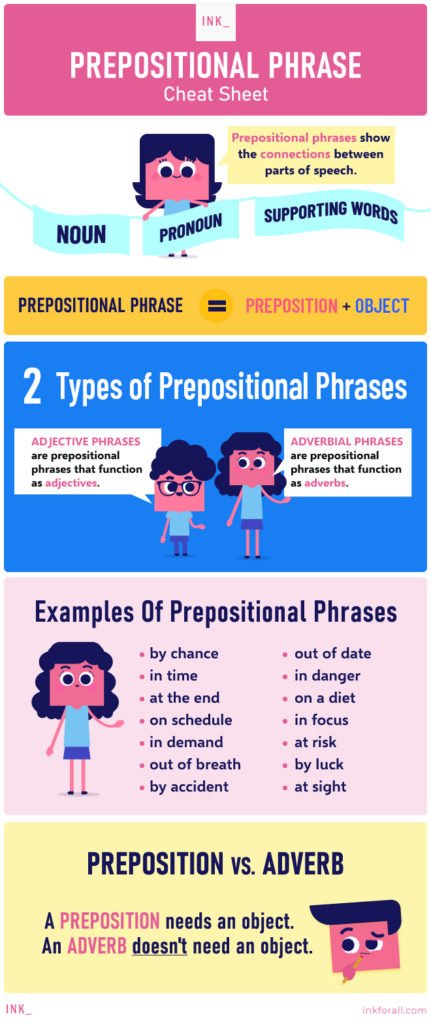
Quick Prepositional Phrase Grammar Quiz
Prepositional Phrase Question #1
A. under the bed
B. whispers
C. the monster
D. at night
Correct!
Wrong!
The answer is A. Under the bed shows the relationship between the monster and the whispers.
Prepositional Phrase Question #2
Correct!
Wrong!
The answer is TRUE. Prepositional phrases can function as either adjective phrases or adverb phrases to modify other words in a sentence. For example, «The girl with him is his daughter.»
Prepositional Phrase Question #3
A. by the door
B. over the line
C. he stole it
D. near the pool
Correct!
Wrong!
The answer is C. A prepositional phrase must include a preposition, its object, and any modifiers of the object.
Prepositional Phrase Question #4
A. The noun of the preposition
B. The noun of the sentence
C. The object of the preposition
D. The object of the sentence
Correct!
Wrong!
The answer is C. The object of the preposition can either be a noun or a pronoun.




